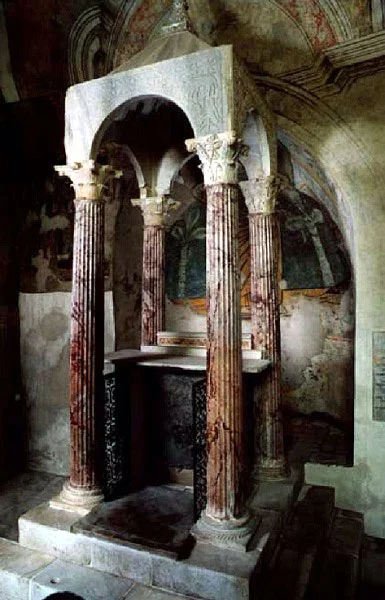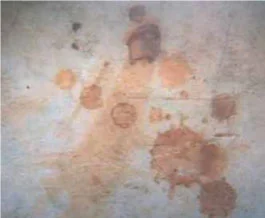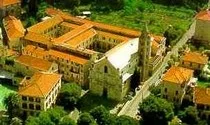bolsena altar
Documents
THE LONGOBARD ALTAR OF BOLSENA
 We are in 13th century Italy. A priest, Father Peter of Prague, is losing faith: he doubts that Jesus is really present in the Eucharist, but asks God for the grace to believe. With this in mind, he decides to leave on a pilgrimage to Rome, to implore the grace of faith on the tomb of the apostle St. Peter.
We are in 13th century Italy. A priest, Father Peter of Prague, is losing faith: he doubts that Jesus is really present in the Eucharist, but asks God for the grace to believe. With this in mind, he decides to leave on a pilgrimage to Rome, to implore the grace of faith on the tomb of the apostle St. Peter. Returning from his personal pilgrimage, he is celebrating Holy Mass in the crypt of Santa Cristina, in Bolsena, when the Sacred Host bleeds and stains the corporal with the Most Precious Blood of Christ.( The altar on which he is celebrating is exactly what we see in the photo on the left and has the ancient shape of the altars of the Lombard period).
The extraordinary event quickly reaches the ears of Pope Urban IV (1262-1264), who was in Orvieto. The Pontiff immediately asks Bishop Giacomo to bring him from Bolsena the corporal that had received the Blood of Christ, which is carried to the Pope in a solemn procession. When Urban IV receives the relic, he kneels before it and shows it to the people.
Urban IV proclaimed that every Thursday following the octave of Pentecost the Church will solemnly celebrate the feast of the Body of Christ, a decision recorded in the papal bull Transiturus de mundo, of 11 August 1264.
It is important to note that there was already a very relevant "precedent" for the establishment of the solemnity of Corpus Domini: in the diocese of Liège, in Belgium, the nun Juliana de Mont Cornillon († 1258) received visions in which Jesus himself asked annual liturgical feast in honor of the Holy Eucharist. Pope Urban knew Blessed Juliana and considered her stories and her appeals to be sincere. The miracle that took place in Bolsena therefore corroborated the importance and the need to formalize the solemnity in honor of the Most Holy Body and Blood of Christ.
Urban IV also entrusted St. Thomas Aquinas with the composition of a specific liturgical office for this solemnity, and Eucharistic hymns that have become part of the Church's treasure forever, such as the Tantum Ergo and Lauda Sion.
In 1290 the cathedral of Orvieto was built, called the "lily of the cathedrals", in which the holy relic of the miracle that revived the faith of Father Pietro da Praga in the Holy Eucharist is still preserved today and which has since revived the faith of all Catholics in the daily miracle of the Body and Blood of Our Lord.
EDITOR'S NOTE (right, a photo of the bloodstained marks on the floor).

In the 1980s / 90s I had the opportunity to go several times from Chianciano (where I was for treatment) to Bolsena and thus I verified how the altar of the crypt is located several rooms away from the sacristy (the place where priests wear liturgical vestments to celebrate and finally return to bring them back). Some slabs of the floor of the rooms along the way between the crypt and the sacristy still showed (faded, but clearly visible, even after 7 sec.) The clear signs of the stains of blood that was dripping from the corporal, while the distraught priest ran towards the sacristy to report what happened, looking for help and advice on what the hell to do. DV.

